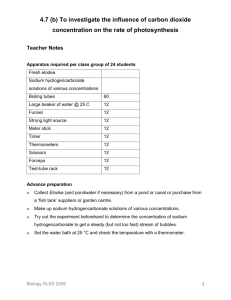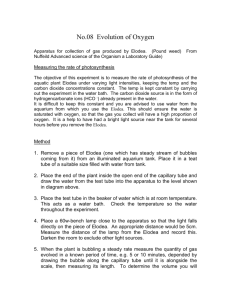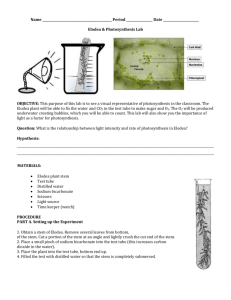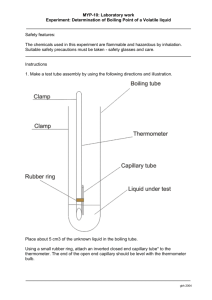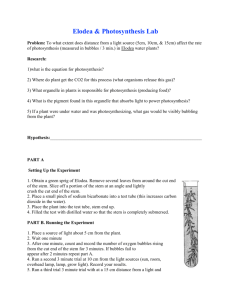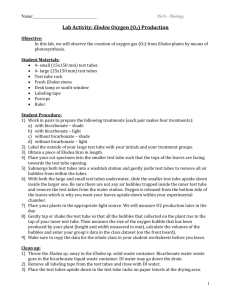To Investigate the Influence of Light on the Rate of Photosynthesis
advertisement
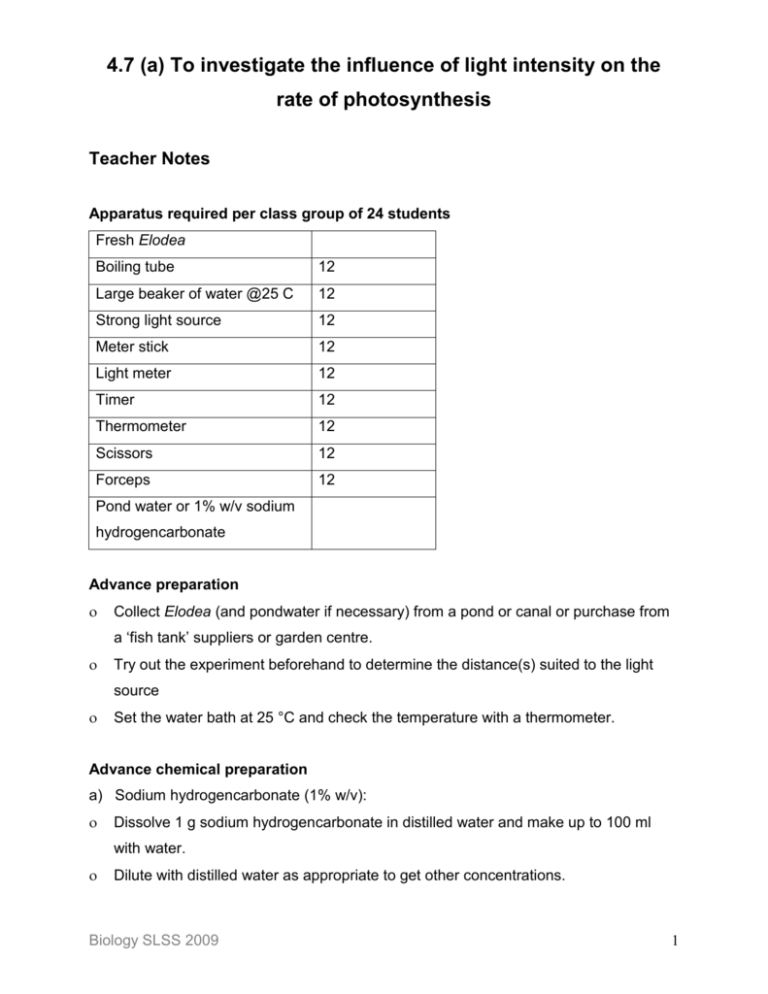
4.7 (a) To investigate the influence of light intensity on the rate of photosynthesis Teacher Notes Apparatus required per class group of 24 students Fresh Elodea Boiling tube 12 Large beaker of water @25 C 12 Strong light source 12 Meter stick 12 Light meter 12 Timer 12 Thermometer 12 Scissors 12 Forceps 12 Pond water or 1% w/v sodium hydrogencarbonate Advance preparation Collect Elodea (and pondwater if necessary) from a pond or canal or purchase from a ‘fish tank’ suppliers or garden centre. Try out the experiment beforehand to determine the distance(s) suited to the light source Set the water bath at 25 °C and check the temperature with a thermometer. Advance chemical preparation a) Sodium hydrogencarbonate (1% w/v): Dissolve 1 g sodium hydrogencarbonate in distilled water and make up to 100 ml with water. Dilute with distilled water as appropriate to get other concentrations. Biology SLSS 2009 1 Expected outcome of experiment Increasing the light intensity will increase the rate of photosynthesis provided there is sufficient carbon dioxide available and provided the temperature is warm enough to allow the reactions to occur. Disposal and post-experiment work o Excess sodium hydrogencarbonate solution can be stored. o If sodium hydrogencarbonate is to be disposed, it should be flushed in excess water to the foul water drain. Biology SLSS 2009 2 4.7 (a) To investigate the influence of light intensity on the rate of photosynthesis Student Notes Apparatus required per group Fresh Elodea Thermometer Boiling tube Scissors Large beaker of water at 25 °C Forceps Strong light source Light meter (optional) Metre stick Timer Pond water or or add 1% w/v sodium hydrogencarbonate Assembled apparatus Method 1. Obtain a fresh shoot of Elodea. 2. Cut the stem at an angle. Remove several leaves from the cut end of the stem. 3. Fill a boiling tube with pond water or add 1% w/v sodium hydrogencarbonate to the boiling tube. Biology SLSS 2009 3 4. Place the plant into the boiling tube, cut end pointing upwards. 5. Place this tube into the water bath. 6. Switch on the light source. 7. Place the water bath containing the elodea at a measured distance from the light source e.g. 15 cm. 8. Allow the plant to adjust for at least 5 minutes and observe bubbles being released from the cut end of the stem. 9. Count and record the number of bubbles released per minute. Repeat twice. 10. Calculate and record the average number of bubbles released per minute. 11. Measure the light intensity at this distance using the light meter or calculate the light intensity by using the formula: light intensity = 1/d2, where ‘d’ represents the distance.from the light source. Record result. 12. Repeat the procedure from step 9 at other measured distances e.g. at 30 cm, 45 cm, 60 cm, 75 cm. 13. A graph should be drawn of rate of bubble production against light intensity. Put light intensity on the horizontal axis. 14. At the end of the experiment, clean all of the equipment and replace it in its correct place. Result Distance Light Trial 1 Trial 2 Trial 3 Average From Intensity (No. of (No. of (No. of (No. of Light Source(cm) or 1/d2 bubbles/min) bubbles/min) bubbles/min) bubbles/min) Conclusion/Comment Biology SLSS 2009 4
